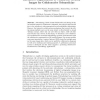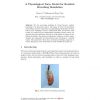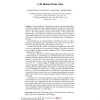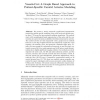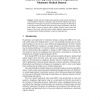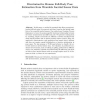106
click to vote
3DPH
2009
14 years 10 months ago
2009
We describe an algorithm for segmenting three-dimensional medical imaging data modeled as a continuous function on a 3-manifold. It is related to watershed algorithms developed in ...
135
click to vote
3DPH
2009
14 years 10 months ago
2009
Abstract. Teleradiology, which enables distribution and sharing of digital medical images for collaborative diagnosis, has enjoyed rapid success due to the advances in telecommunic...
3DPH
2009
15 years 2 months ago
2009
For the convincing modeling of virtual humans, realistic breathing is an important aspect. This paper is about the simulation of breathing, based on anatomical and physiological pr...
3DPH
2009
15 years 2 months ago
2009
Disorientation induced by G-forces during aerobatic flight generates difficulties for the pilots to perfectly align their aerobatic maneuver. This paper presents a modular wearable...
159
Voted
3DPH
2009
15 years 2 months ago
2009
3D representations of human physiology provide interesting options in the field of education. Understanding the human brain seems to be much easier when the anatomical structure is...
109
Voted
3DPH
2009
15 years 2 months ago
2009
We present a nearly automatic graph-based segmentation method for patient specific modeling of the aortic arch and carotid arteries from CTA scans for interventional radiology simu...
100
click to vote
3DPH
2009
15 years 2 months ago
2009
During real-time medical data exploration using volume rendering, it is often difficult to enhance a particular region of interest without losing context information. In this paper...
96
Voted
3DPH
2009
15 years 2 months ago
2009
Abstract. A common problem in optical motion capture of human-body movement is the so-called missing marker problem. The occlusion of markers can lead to significant problems in tr...
131
click to vote
3DPH
2009
15 years 2 months ago
2009
Statistical Shape Models have been proven to be valuable tools for segmenting anatomical structures of arbitrary topology. Being based on the statistical description of representat...
105
Voted
3DPH
2009
15 years 2 months ago
2009
Abstract. In this paper, a method is presented that allows reconstructing the full-body pose of a person in real-time, based on the limited input from a few wearable inertial senso...

